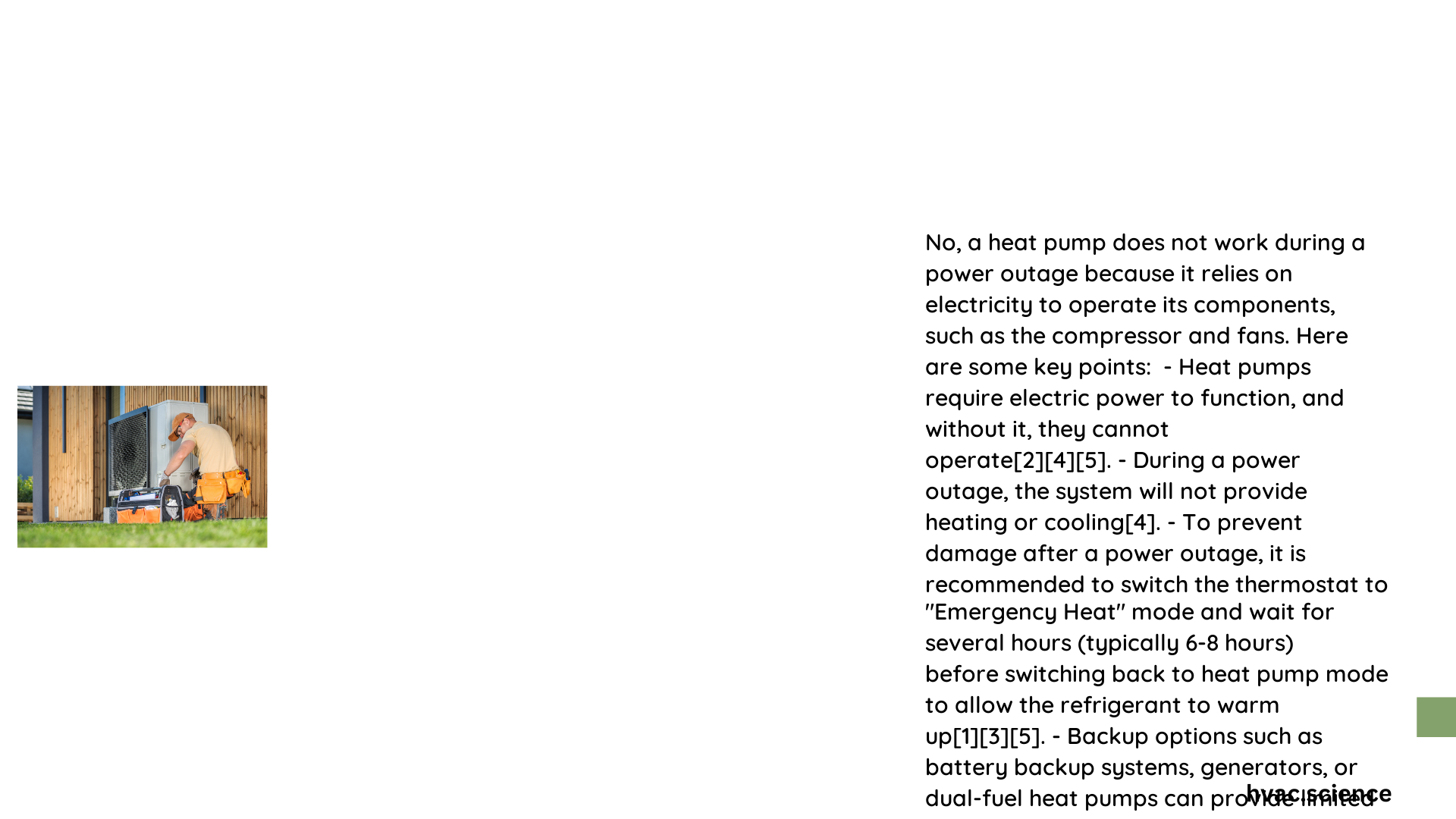Heat pumps are sophisticated electrical systems designed to transfer thermal energy, but they become completely non-operational during power interruptions. When electricity fails, these devices cannot extract or move heat, leaving homeowners without heating or cooling capabilities. Understanding the limitations and potential solutions becomes crucial for maintaining home comfort and preparing for unexpected power disruptions.
What Happens to Heat Pumps When Power Goes Out?
Heat pumps fundamentally require electrical power to function, which means they become inert during blackouts. Let’s explore the detailed mechanics of heat pump performance during power loss.
How Do Heat Pumps Depend on Electricity?
Heat pumps operate through several electrical components:
| Component | Electrical Requirement | Function |
|---|---|---|
| Compressor | Essential | Circulates refrigerant |
| Indoor/Outdoor Fans | Critical | Moves air across heat exchangers |
| Control Board | Necessary | Manages system operations |
| Sensors | Important | Monitors temperature and performance |
Why Can’t Heat Pumps Generate Heat Without Power?
The heat pump’s core functionality relies on electrical energy to:
– Compress refrigerant
– Move heat between indoor and outdoor environments
– Regulate system temperature
– Control mechanical components
What Alternatives Exist for Heating During Power Outages?
Homeowners have multiple strategies to maintain warmth when heat pumps fail:
- Battery Backup Systems
- Provide temporary electrical supply
- Can power heat pump for limited duration
- Costs range $5,000-$15,000
-
Typically support 4-12 hours of operation
-
Dual-Fuel Heat Pump Systems
- Combine electrical heat pump with gas furnace
- Automatic switchover during power loss
- More expensive initial investment
-
Ensures continuous heating
-
Portable Generators
- Direct electrical supply to heat pump
- Requires professional installation
- Costs vary from $500-$5,000
- Provides flexible power solution
How Long Can Heat Pumps Remain Inactive?
When power returns, heat pumps require careful restart:
– Wait 6-8 hours before reactivation
– Use “Emergency Heat” setting
– Allow refrigerant to stabilize
– Prevent potential compressor damage
What Precautions Should Homeowners Take?
Recommended preparation strategies include:
– Install battery backup systems
– Maintain portable generators
– Have alternative heating sources
– Create emergency heating plan
– Insulate home effectively
Technical Considerations for Heat Pump Power Loss

Professional HVAC technicians recommend:
– Regular maintenance checks
– Understanding system limitations
– Investing in comprehensive backup solutions
– Evaluating home’s specific heating requirements
Cost-Effective Backup Heating Options
| Solution | Average Cost | Reliability | Installation Complexity |
|---|---|---|---|
| Battery Backup | $5,000-$15,000 | High | Moderate |
| Portable Generator | $500-$5,000 | Medium | Low |
| Dual-Fuel System | $8,000-$20,000 | Very High | High |
Final Recommendations
While heat pumps cannot operate during power outages, strategic planning and investment in backup systems can ensure continuous home comfort. Consult local HVAC professionals to design a personalized solution matching your specific needs.
